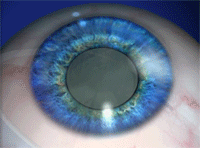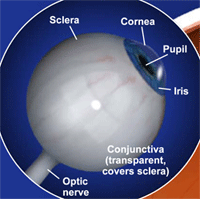
Ophthalmology Center
Experienced Eye Surgeons to Brighten Your World
If you have a vision impairment, you know how debilitating it can be. Driving, reading, working – virtually every aspect of your daily life is affected. The expert surgeons and knowledgeable hospital staff are committed to helping patients see clearly again.
We are your eye surgery center. We treat a wide variety of eye conditions at our hospital, and we provide guidance throughout the process to ensure both your experience and recovery are as fast and painless as possible.
Some of the conditions we treat include:
- Eye trauma
- After cataracts
- Cataracts
- Common vision problems
- Detached retina
- Glaucoma (narrow angle)
- Glaucoma (primary open angle)
- Macular degeneration ("dry" age-related)
- Macular degeneration ("wet" age-related)
- Strabismus (crossed eyes)
What Can I Do About My Eye Condition?
While the future about your eye health may seem bleak now, Methodist Health System offers many treatment options that can help restore your vision. Our cutting-edge surgical equipment makes it simpler than ever to repair and restore or improve your sight.
We offer the following treatment options:
-
Cataract removal (no needle, no stitches) — When proteins begin sticking to each other in the lenses of your
eyes, they begin clouding over and
 obstructing vision. We offer laser surgery procedures to break up these
proteins, restoring your lens to clarity.
obstructing vision. We offer laser surgery procedures to break up these
proteins, restoring your lens to clarity.
- Conductive keratoplasty (CK) — Your ability to focus on close objects decreases with age. This surgical procedure increases the curvature of your cornea, giving you renewed sharpness when viewing up things close.
- Corneal transplant (PK) — As corneal eye disease is a major cause of blindness, a transplant is sometimes necessary. Our surgeons will remove your damaged cornea and replace it with a functional one.
- Focal laser photocoagulation — If abnormal blood vessels leak into the retina, we offer a procedure where lasers can either stop their effects or destroy them altogether.
- Glaucoma laser treatment: ALT — When eye fluid doesn’t drain like it should, pressure can build up against the optic nerve that causes lasting damage. In ALT treatments, lasers will create more pathways for draining, giving eye fluid a place to go, thereby relieving the damaging pressure.
- Glaucoma laser treatment: CPC — This treatment option reduces the amount of eye fluid produced by using lasers, closing off some of the fluid production sites to help relieve pressure on the optic nerve.
-
LASIK — Refractive surgery, or LASIK, is a painless, needle-free procedure
that uses lasers to remove corneal tissue, reshaping the surface your eye
 uses to focus on objects and see.
uses to focus on objects and see.
- LASIK with the VISX CustomVue System — This revolutionary new procedure takes LASIK one step further by scanning the patient’s eye to create a detailed, personalized map before beginning the procedure. This allows for a more customized eye treatment.
- Photodynamic therapy for wet ARMD — To prevent leaking blood vessels from secreting into the macula, this procedure works by injecting a photosensitive medicine into the eye’s bloodstream that seals those blood vessels when exposed to light.
- Pneumatic retinopexy — In cases of a retinal tear, we can perform a procedure where air is injected into the eye, naturally moving the torn retinal flap back into place. Once there, your doctor will seal the tear, allowing eye fluid to heal the wound.
- Refractive lens exchange — This procedure replaces your damaged lens with an artificial one.
- Sutureless corneal transplant (DSAEK) — Damaged or diseased cornea tissue is replaced with healthy cornea tissue in order to spur the growth of a healthy cornea. This surgery can be completed with minimal recovery time.
- Vitrectomy — If the gel between the lens and the retina of the eye become cloudy, this surgery acts to remove some of it in order to improve vision.
- YAG Laser Capsulotomy surgery for after cataracts — As there can sometimes be complications stemming from eye surgery, this procedure uses lasers to help eliminate some of the cloudiness that may have resulted.
We can help you find a doctor.
Call (214) 947-0000Request a Call
